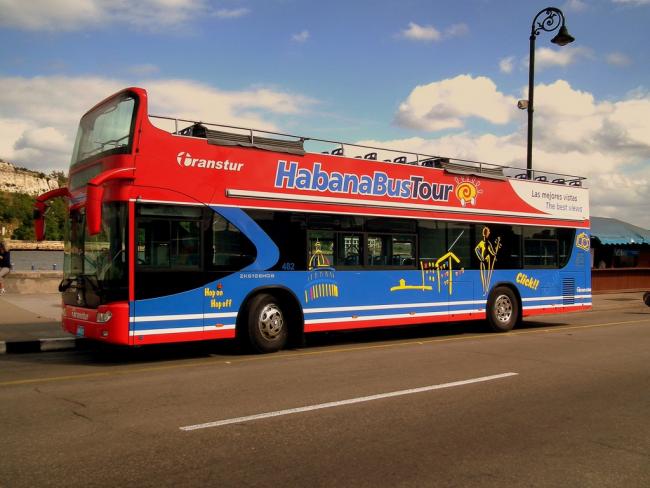by LOUIS A. PEREZ JR.

As relations with Cuba move toward normalization, the transformation of “people-to-people” travel into an element of U.S.-Cuba policy revives old racialized representations of the island and its people.
Over the course of 55 years, the United States has pursued change in Cuba with implacable tenacity and almost single-minded resolve: one armed invasion, scores of assassination plots, years of covert operations, and decades of punitive economic sanctions. An embargo—“harsher than on any other countries in the world,” as Assistant Secretary of State Roberta Jacobson acknowledged in 2015—was designed with malice of forethought: to inflict adversity upon the Cuban people and deepen Cuban discontent through economic privation, in the hope that hardship would bestir the island’s people to rise up and, in one fell swoop, precipitate the overthrow of the Castro government.
Starting in 2014, the Obama administration introduced a new lucidity to U.S. policy—one informed with a more nuanced appreciation of the perils attending political change obtained through economic collapse. The United States’ 55-year-old policy had not worked, the President affirmed outright on December 17, 2014: “In Cuba, we are ending a policy that was long past its expiration date. When what you’re doing doesn’t work for 50 years, it’s time to try something new.”
In principle, Obama’s words represented a remarkable paradigm shift. However, in practice, the President’s actions have thus far been less a change of ends than a change in means. That is to say, a reset of U.S. strategies for change: if not change of regime, in the short run, then change in the regime, in the long run. For 55 years, the United States had insisted upon political change in Cuba as the precondition to normal diplomatic relations. Under the Obama administration, that policy has been turned on its head, establishing that normal diplomatic relations are the condition to obtain political change. “Through engagement,” President Obama explained, “we have a better chance of bringing out change than we would have otherwise.” He elaborated on this when speaking with CNN’s Candy Crowley later in December 2014: “If we engage,” Obama said, “we have the opportunity to influence the course of events at a time when there’s going to be some generational change in that country… I think we should seize it, and I intend to do so.”
The new policy of “engagement” contemplates political change induced from within, not imposed from without, and is a strategy intended to “empower” the Cuban people themselves to act as agents of change. According to Assistant Secretary Jacobson, “We would hope to bring about change in the regime. And simultaneously, we would hope to empower the Cuban people to be able to make that change.”
People-to-People’s Subversive Intent
Few “change-in-the-regime” strategies have attracted as much policy interest and public attention as the expansion of “people-to-people” travel initiatives. Originally conceived during the 1990s, the idea of people-to-people was informed with subversive intent, as the United States was persuaded that an expanded U.S. presence in Cuba would serve to diffuse American values among the Cuban people, and thereupon to hasten political change. As Fidel Castro warned in 1995, “They seek to penetrate us… weakening us… and destabilizing the country.”
In 2007, then Senator Christopher Dodd (D-CT) called American travelers the U.S.’s “most potent weapon.” (In October 2000, Dodd maintained that “There is no better way… to communicate America’s values…than by unleashing the average American men and women to demonstrate, by daily living, what our great country stands for, and the contrasts between what we stand for and what exists in Cuba today.”) Americans “will take new ideas, new values and real change for Cuba,” predicted Senator Richard Durbin (D-IL) in January 2015. “We’ll see a dramatic change in Cuba if there is more travel.” Indeed, American travel to Cuba has today assumed something of a strategic imperative. As Vicki Huddleston, former head of the U.S. Interests Section in Havana, affirmed in her 2010 book Learning to Salsa: New Steps in U.S.-Cuba Relations (co-authored with Cuban-American diplomat and former U.S. ambassador to Mexico, Carlos Pascual), “People-to-people contacts… are a fundamental tool serving a new strategic perspective: change in Cuba must come from within.”
In recent years, the Obama administration has revived people-to-people initiatives and acted quickly to expand authorized travel Cuba. Throughout 2015, the Treasury Department implemented new measures to facilitate licensed travel to Cuba. In early 2016, a U.S.-Cuba civil aviation agreement authorized as many as 110 daily flights between the United States and Cuba, potentially increasing the 4,000 charter flights annually to as many as 45,000 scheduled flights, a “key element” within the President’s broader policy of normalizing relations. U.S. travelers were thus enlisted as agents of change, whose very authorizations to travel to Cuba were granted in function of U.S. policy.
